Intel Atom C3758 Benchmarks
For this exercise, we are using our legacy Linux-Bench scripts which help us see cross-platform “least common denominator” results we have been using for years as well as several results from our updated Linux-Bench2 scripts. At this point, our benchmarking sessions take days to run and we are generating well over a thousand data points. We are also running workloads for software companies that want to see how their software works on the latest hardware. As a result, this is a small sample of the data we are collecting and can share publicly. Our position is always that we are happy to provide some free data but we also have services to let companies run their own workloads in our lab, such as with our DemoEval service. What we do provide is an extremely controlled environment where we know every step is exactly the same and each run is done in a real-world data center, not a test bench.
We are going to show off a few results, and highlight a number of interesting data points in this article.
Python Linux 4.4.2 Kernel Compile Benchmark
This is one of the most requested benchmarks for STH over the past few years. The task was simple, we have a standard configuration file, the Linux 4.4.2 kernel from kernel.org, and make the standard auto-generated configuration utilizing every thread in the system. We are expressing results in terms of compiles per hour to make the results easier to read:

Performance wise we see a fairly stark increase over the 8-core Intel Atom C2758 processor, the Atom C3758’s direct predecessor. We have a number of higher-end parts in our charts as well just to give some relative sense of performance.
c-ray 1.1 Performance
We have been using c-ray for our performance testing for years now. It is a ray tracing benchmark that is extremely popular to show differences in processors under multi-threaded workloads. We are going to use our 4K results which work well at this end of the performance spectrum.

Here we see the Intel Atom C3758 significantly outpace the Intel Xeon D-1518 4C/8T CPU. The decent clock speeds along with a revamped cache also push it well ahead of its predecessor.
7-zip Compression Performance
7-zip is a widely used compression/ decompression program that works cross-platform. We started using the program during our early days with Windows testing. It is now part of Linux-Bench.
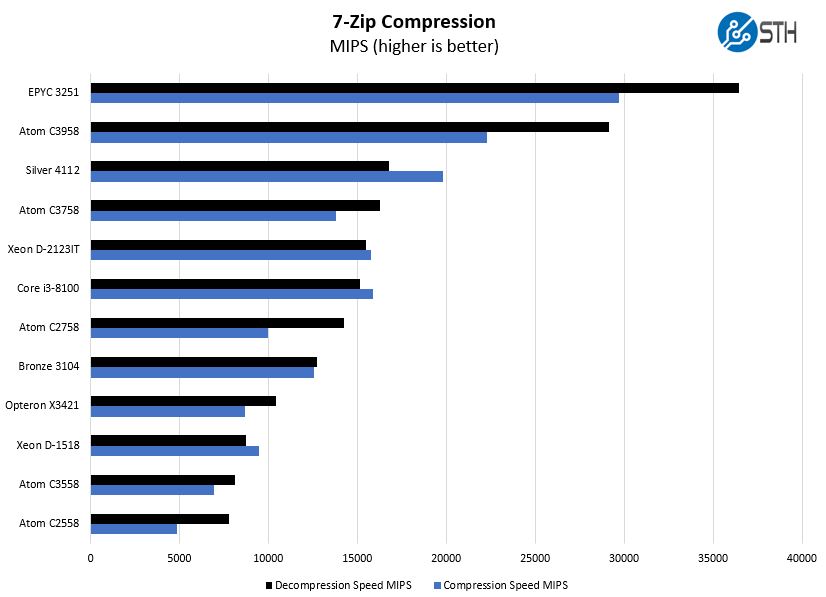
On the compression side, we again see some significant gains. Here the eight cores help the Intel Atom C3758 surpass even the Intel Xeon Bronze 3104 which is more expensive and larger.
NAMD Performance
NAMD is a molecular modeling benchmark developed by the Theoretical and Computational Biophysics Group in the Beckman Institute for Advanced Science and Technology at the University of Illinois at Urbana-Champaign. More information on the benchmark can be found here. Here are the comparison results for the legacy data set:

We have not discussed this much, but you will see a fairly large gap between the Intel Atom C3758 and the AMD Opteron X3421. The Atom C3758 has twice as many cores but no GPU and a lower TDP. If you need more performance, then this is a better option.
Sysbench CPU test
Sysbench is another one of those widely used Linux benchmarks. We specifically are using the CPU test, not the OLTP test that we use for some storage testing.

Here we see a simple expression of having 8 cores helping in this test. The more cores here, generally the better CPUs do. There are tasks where simply being able to run more in parallel is beneficial.
OpenSSL Performance
OpenSSL is widely used to secure communications between servers. This is an important protocol in many server stacks. We first look at our sign tests:
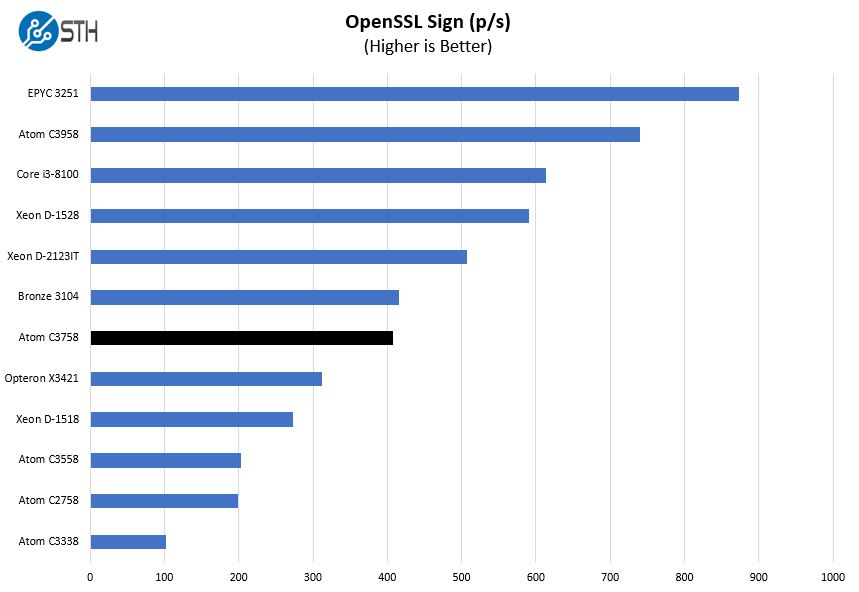
Here are the verify results:
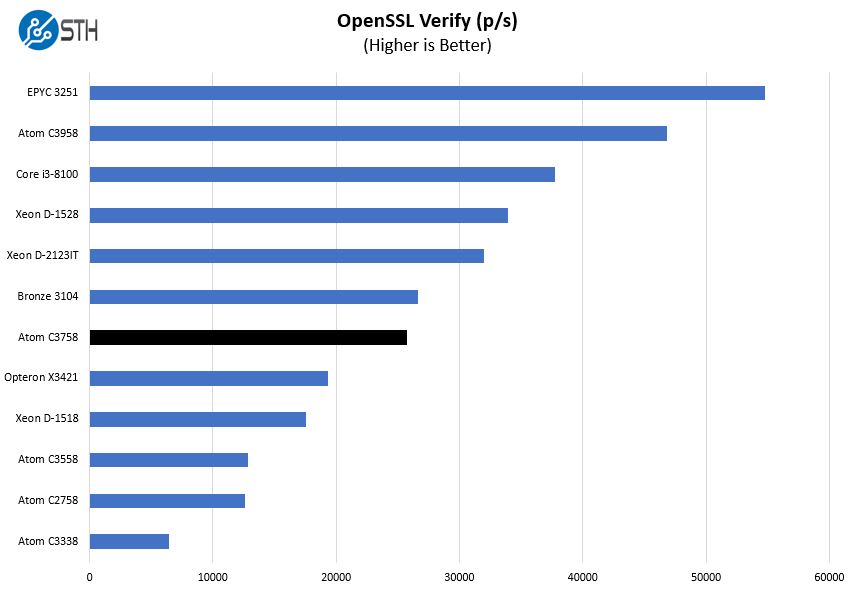
A note here, these are using the standard CPU features, not Intel QuickAssist technology. Intel QAT is an accelerator for compression and encryption that is now several generations old. More programs are now supporting QAT but it still requires explicitly declaring support rather than being a built-in feature. In some OSes, it can be difficult to even get QAT running to accelerate features like ZFS compression.
Intel needs to do a better job expanding the QAT reach to more of its SKUs so we can finally get encryption for “free” on its CPUs. If you have purpose-built hardware then this provides a lot of potential as we showed in our Intel QuickAssist at 40GbE Speeds: IPsec VPN Testing and Intel QuickAssist Technology and OpenSSL Benchmarks and Setup Tips pieces.
UnixBench Dhrystone 2 and Whetstone Benchmarks
Some of the longest-running tests at STH are the venerable UnixBench 5.1.3 Dhrystone 2 and Whetstone results. They are certainly aging, however, we constantly get requests for them, and many angry notes when we leave them out. UnixBench is widely used so we are including it in this data set. Here are the Dhrystone 2 results:
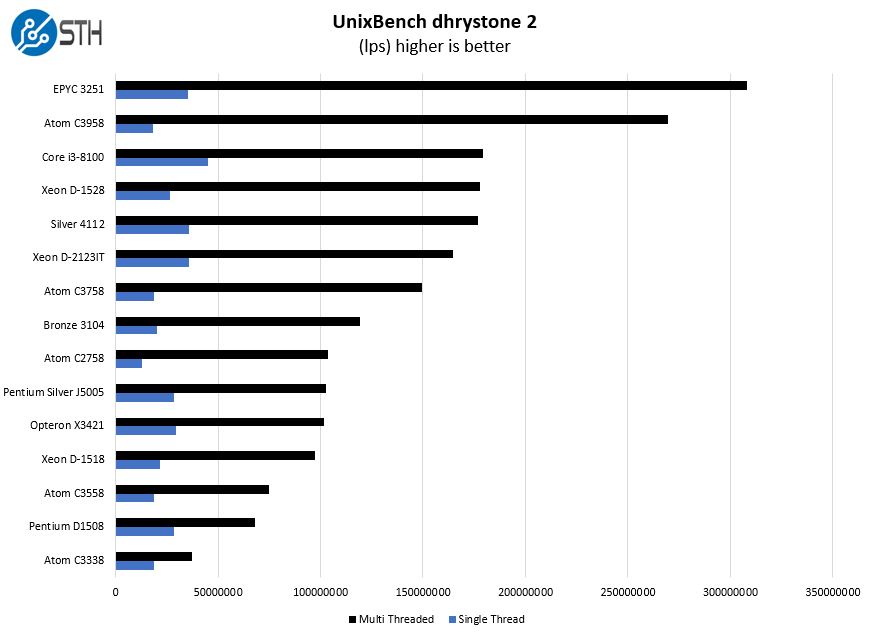
Here are the whetstone results:
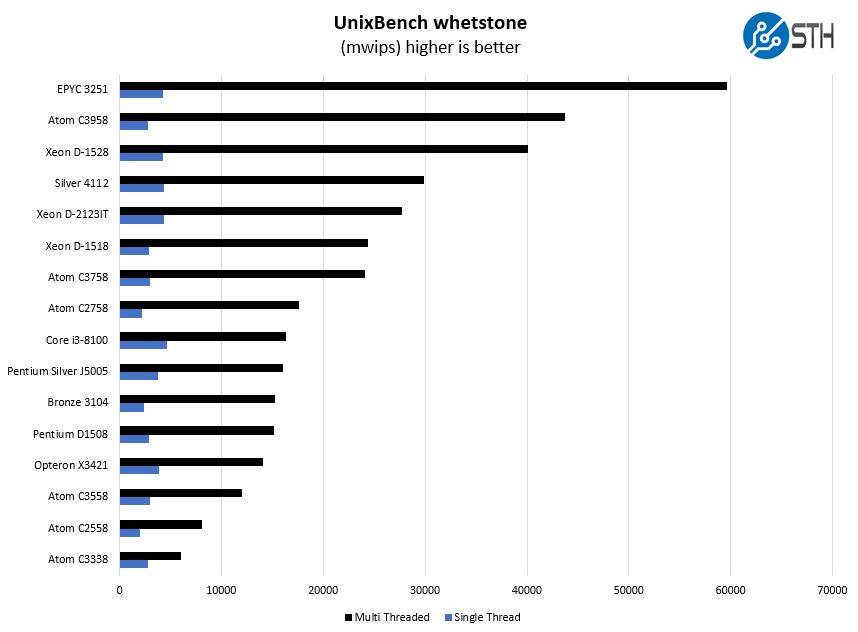
Per-thread performance is not necessarily the best, however, one can clearly see that having many cores helps. Also, there is a large single thread performance boost over the Intel Atom C2758 which is how the Denverton series Intel Atom C3758 is seeing such large performance gains over its predecessor.
Chess Benchmarking
Chess is an interesting use case since it has almost unlimited complexity. Over the years, we have received a number of requests to bring back chess benchmarking. We have been profiling systems and are ready to start sharing results:

On the chess benchmarking side, one can again see the higher clock speed parts take over. We think that one needs to gauge how well their workload matches the new Atom C3000 cores. With this generation, there have been massive performance improvements so more workloads are going to align with the Intel Atom C3758 than the previous generation Atom C2758. The Atom C2758 coincidentally has been a very popular part.
Next, we are going to have market positioning and our final words.

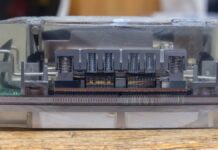


Thank you for that article John, two comments:
1) I wouldn’t consider the Xeon D-21xx series of chips competition to the C3xxx series Atom line. They are well differentiated (hardware capabilities, power consumption, price). A better comparison are the lower-power offerings in the D-15xx Xeon series whose attributes overlap significantly with the Atom C3xxx series.
For example, I find the Xeon D-15xx Flex ATX boards from Supermicro the ones to beat when it comes to building a relatively future-proof storage-centric server. SuperMicro offers a variety of CPUs and board component choices while also offering two PCI3.0 x8 slots, a PCI3.0 x4 NVME interface, dual SATADOM ports, oodles of RAM capacity, optional LSI SAS, SFP+, 10GBe copper, etc.
2) I wish that ServeTheHome offered a synthetic benchmark test that took a FreeNAS or similar SOHO platform and benchmarked it with a couple of use cases – i.e. transfer speeds with 1-10 users.
For example, it would be great to know if the 2-Core Pentium 1508 may be a better CPU for a SMB/CIFS SOHO application than a higher-core D-15xx competitor. It’s peak clock speed is higher and some protocols like SMB/CIFS are single-thread. Other users may be interested in transcoding/streaming benchmarks, virtualization, and so on.
Patrick has described an amazing lab environment, it would be great if STH could put all those CPUs to work hammering a server test subject with demands for content, attempts to write, etc. Conversely, if creating a benchmark is not going to happen, how about explaining how to extrapolate to real-life scenarios such as maximum 10GBe performance,?
@ Constantin, I agree with you some realworld benchmarks would be helpfull.
But you could kinda extrapolate the answer you are looking for from the syntetics.
I came to the conclussion that the C3758 would probally not be able to get close to 10gbe(with nvme or ssds) but I am currios if I was right or even close.
There are not a lot of information about cpu and boards for server use compaired to gpus and cpus.
Heck even plain rgb stuff gets more reviews then server stuff.